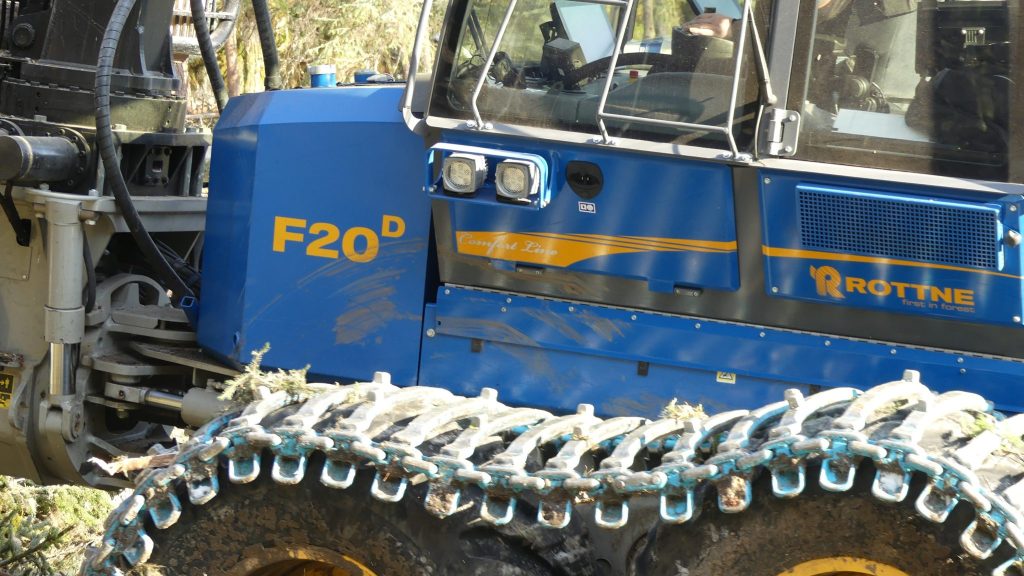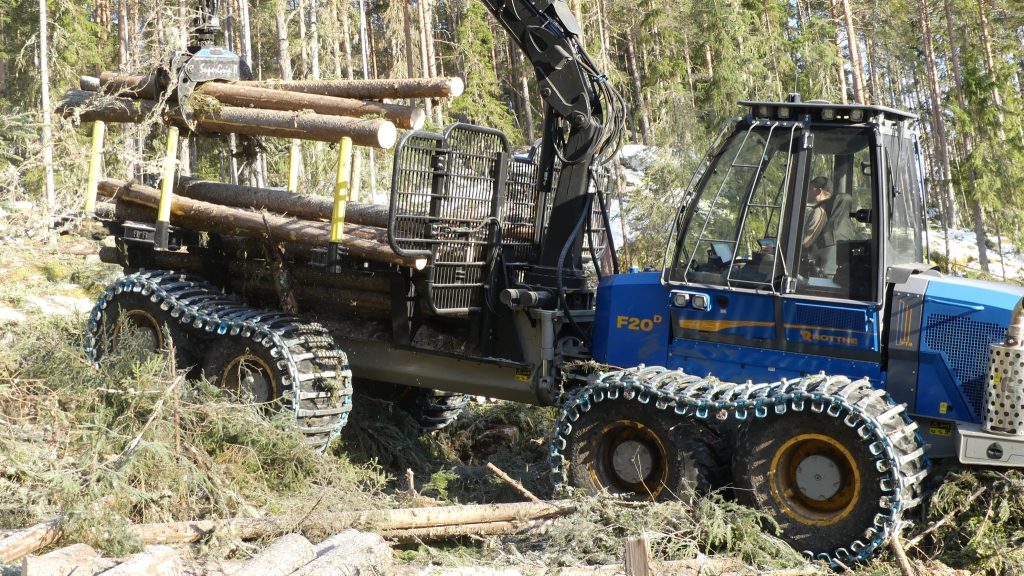Rottne introduced the new 20-ton forwarder Rottne F20D in late 2016 and forest contractor Börje Norbäck AB in Stöde in north Sweden was one of the first to try it out. He intend to replace one of his old forwarders with a new full size model and decided to put the F20 through its paces as he got hold on the first demo machine on tour.
I went with the operator Jonny Larsson who drove the F20 this day and got some insight into the hard life of a full size forwarder. There is already a Rottne F18 in the company, but Jonny normally drive a Ponsse Elephant King. The load capacity is comparable between the Ponsse and the F20 but after a some days in the new Rottne, Jonny had falled in love with the cabin dampening. He says he will miss it when he returns to his Ponsse in a few days. On the other hand, he missed his Ponsse’s double-telescope crane and the last meter was “missing” too often according to Jonny. The F20’s demo version had a single-telescope RK160 crane, but it can also be delivered with a double-telescope.
What’s new?
What is actually the difference between the Rottne Forwarders F18D and F20D? Not really much more than the F20 is approved for 20 tons of load. The F20 has a balanced bogie and some slight adjustments which makes the bogie manufacturer to that guarantee that the forwarder can take 20 tonnes. In addition, it has bigger wheels (but that is also offered as an option at the F18D). Otherwise, the engine, hydraulics, crane, driveline and everything else are identical with the F18D. For those who want to see the technical specifications, you will find them on Rottne’s site.
Heavy is Duty
The F20 is primarily designed for the North American market, but according to Rottne, there is a lot of interest for big forwarders for heavy logging, even in the Scandinavian market. The logging site I visited is a good example where the size of the machine makes a difference. I clocked the time it took for loading and bringing a load to the landing and until it was unloaded. With all reservation because this is a demo machine unused for the operator and that I was “a disturbing element”, I choose to present the result even if it’s not scientific. It could be a good base for some discussions about forwarder size.
It took Jonny about 20 minutes to drive the kilometer from the landing to the logging site. The loading took about 15 minutes but it can probably be done faster. Here, Jonny claimed that double-telescope would reduce driving (and time) as he would have reached two rows of logs from the same route. The tour back to the landing with full load (24 cubic meters of spruce logs) took about 25 minutes and Jonny spent another five to unload. In total, the turn took 65 minutes. Or 22 cubic meters per hour
Size Matters
It is quite easy to understand that every cubic meter extra on the load increases the productivity in the forwarding. The longer driving distance – the greater difference. In final felling, machine size and weight do not have the same negative impact on the remaining forest as it has in thinning operations. With eight wheels and tracks all around, the ground pressure is still reasonable. The full size forwarder though, needs more space around its route. Especially when the forwarder is equipped with load extension lika Rottnes Wide Load XL (or the ALS from Hultdins)
Video
Here is a video from the visit (in Swedish but with English subtitles)













